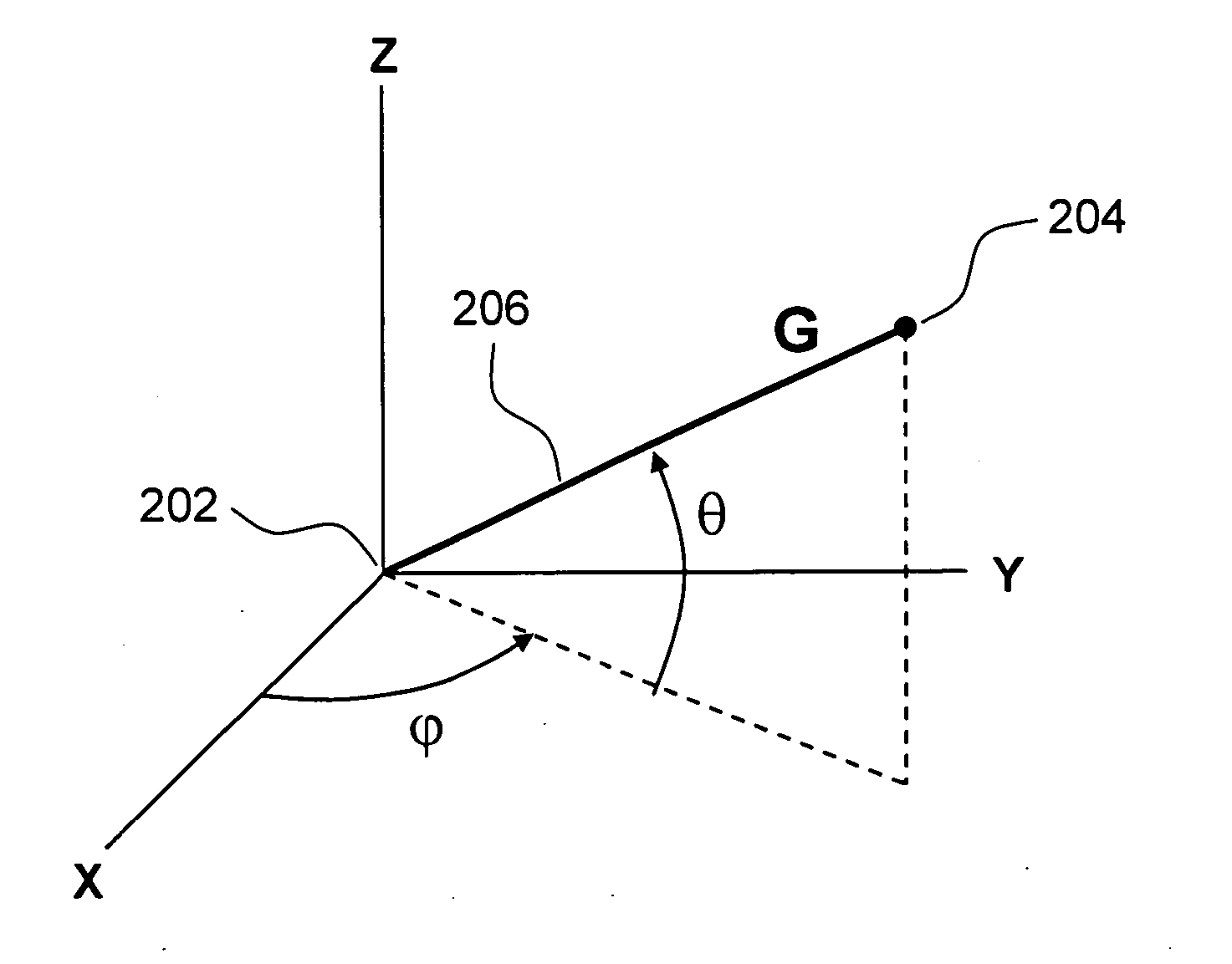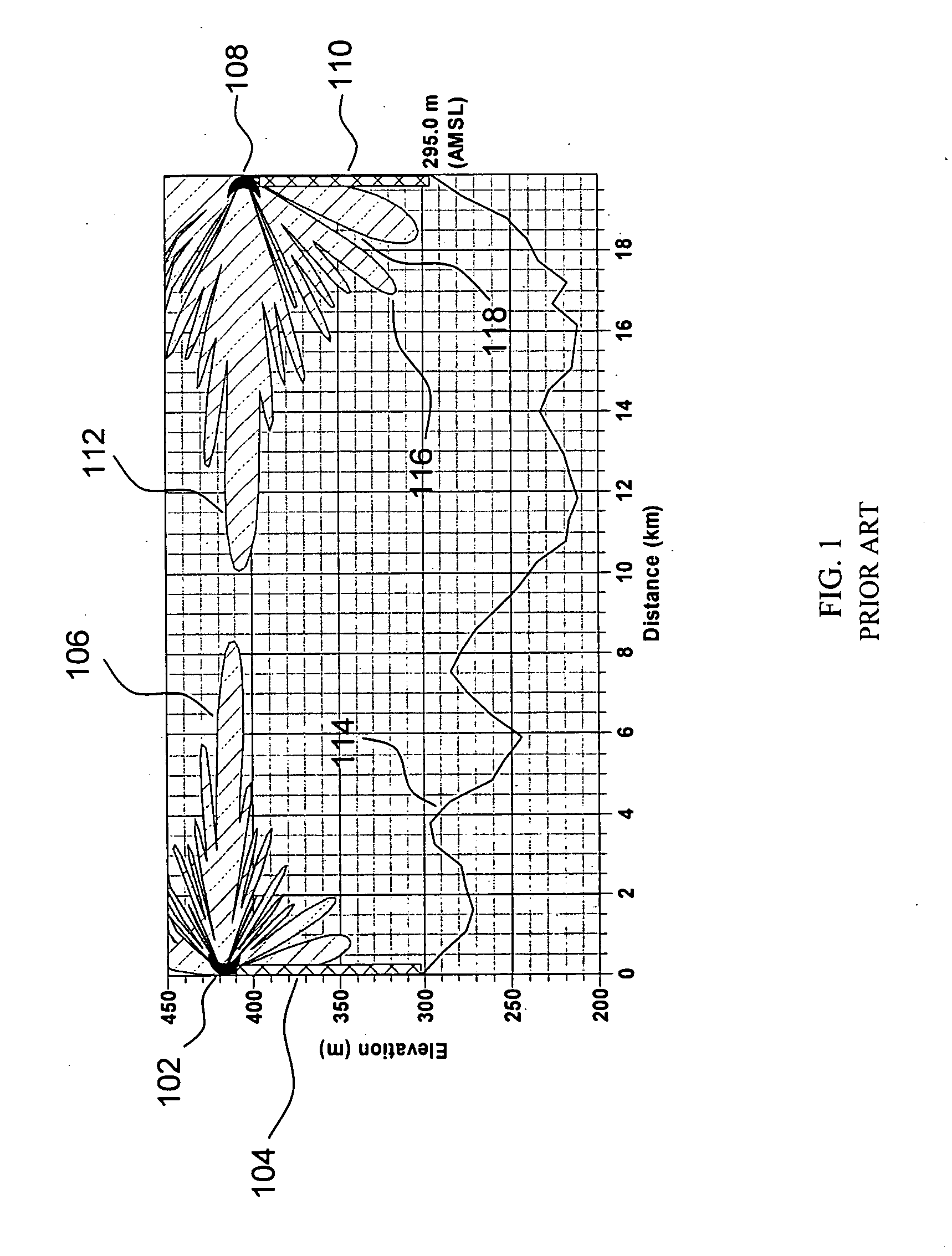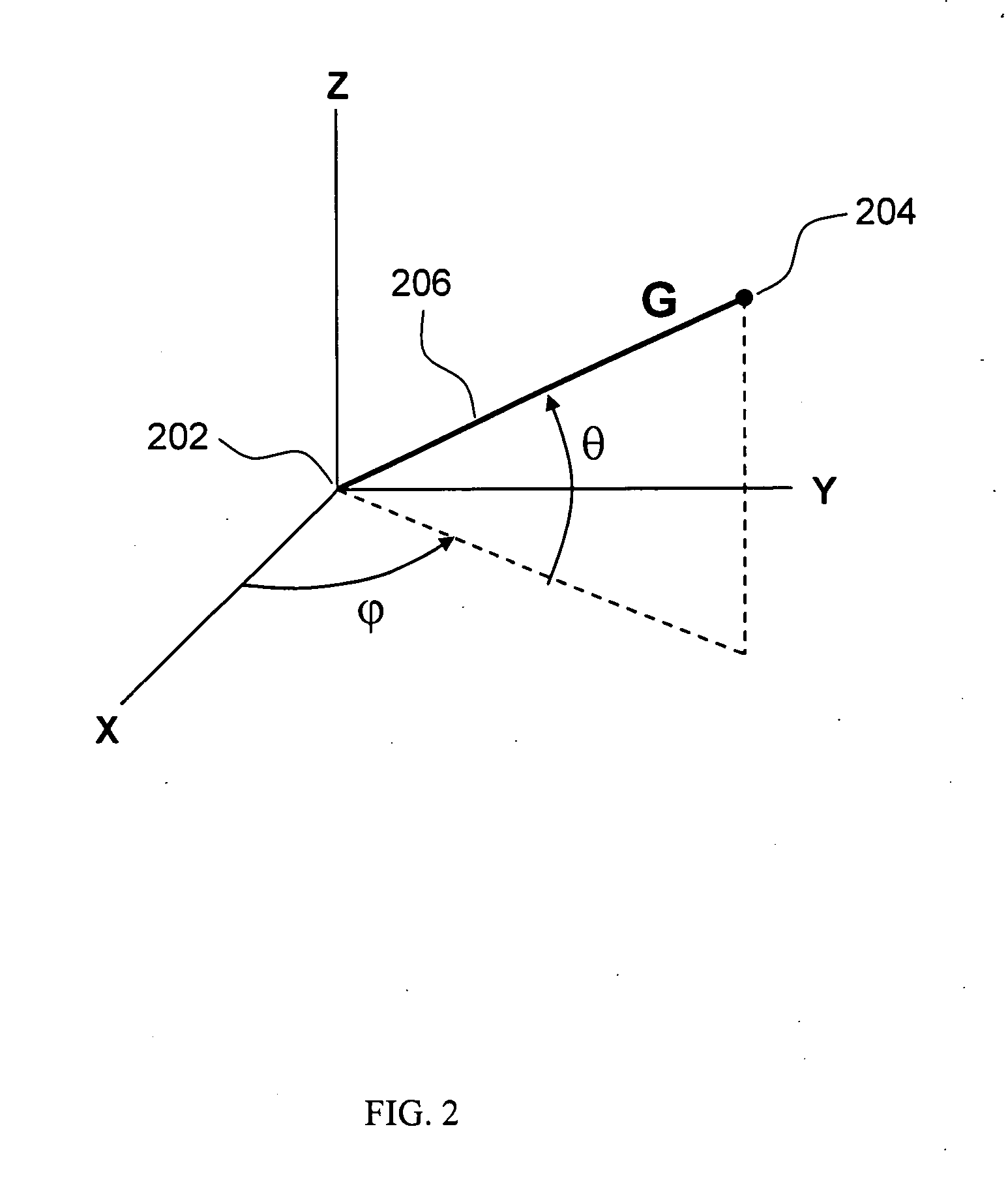Method and system for generating three-dimensional antenna radiation patterns
a technology of antenna radiation pattern and three-dimensional antenna, applied in the direction of digital transmission, transmission monitoring, instruments, etc., can solve the problems of inaccurate back pattern prediction, one half of the vertical pattern can be rotated, and the 3d back lobe may or may not match the original vertical cross section, so as to achieve the effect of reducing the disadvantages
- Summary
- Abstract
- Description
- Claims
- Application Information
AI Technical Summary
Benefits of technology
Problems solved by technology
Method used
Image
Examples
Embodiment Construction
[0055]FIG. 2 shows the preferred geocentric coordinate system used with the present invention. A computational grid is prepared by specifying a θ and a φ spacing and a radius value of unity. Initially, the grid is simply the unit sphere, i.e., an isotropic antenna. As the calculation proceeds, the various radial distances on this grid will be replaced by the gain values calculated and the result will be a surface that describes the shape of the antenna pattern. For convenience, the angular spacing is usually uniform, but it can be totally arbitrary.
[0056] Although a geocentric coordinate system is preferred because it simplifies the mathematical derivation, any 3D coordinate system may be employed. FIG. 10 shows, as an example, and without loss of generality, a horizontal pattern 1004 shaped like an ellipse, placed on the X-Y plane, and an arbitrarily shaped vertical pattern 1002, placed on the Y-Z plane. The vertical pattern is shown as a vertically hatched shape.
[0057]FIG. 11 sh...
PUM
 Login to View More
Login to View More Abstract
Description
Claims
Application Information
 Login to View More
Login to View More - R&D
- Intellectual Property
- Life Sciences
- Materials
- Tech Scout
- Unparalleled Data Quality
- Higher Quality Content
- 60% Fewer Hallucinations
Browse by: Latest US Patents, China's latest patents, Technical Efficacy Thesaurus, Application Domain, Technology Topic, Popular Technical Reports.
© 2025 PatSnap. All rights reserved.Legal|Privacy policy|Modern Slavery Act Transparency Statement|Sitemap|About US| Contact US: help@patsnap.com



